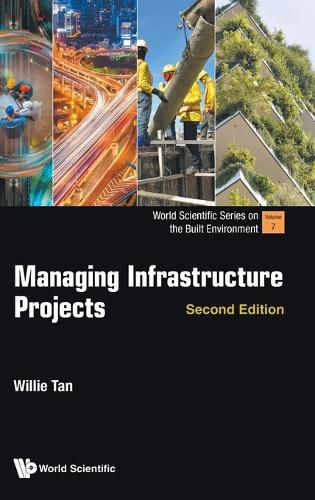Readings Newsletter
Become a Readings Member to make your shopping experience even easier.
Sign in or sign up for free!
You’re not far away from qualifying for FREE standard shipping within Australia
You’ve qualified for FREE standard shipping within Australia
The cart is loading…






This book is about managing the infrastructure development cycle from project initiation to the end of the operation and maintenance phase. It focuses on the public-private partnership contract and, from this perspective, private and public sector procurement are variations.The book presents general principles that are applicable in different countries, particularly in the developing world where markets and other institutions are less developed, and uses examples to clarify ideas. In this second edition, each chapter has been expanded and updated. The treatment is more balanced between pre-tender and post-tender stages of infrastructure development.Designed for students from different backgrounds, such as information technology, business, architecture, quantity surveying, urban planning, project management, engineering, construction, facilities management, transport, finance, economics, and law, the book provides a structured guide to these diverse students as well as researchers, public officials, project sponsors, lenders, developers, contractors, subcontractors, suppliers, investors, infrastructure fund managers, insurers, facilities managers, non-government organizations, and consultants such as designers, engineers, environmental specialists, legal advisors, and brokers.
$9.00 standard shipping within Australia
FREE standard shipping within Australia for orders over $100.00
Express & International shipping calculated at checkout
This book is about managing the infrastructure development cycle from project initiation to the end of the operation and maintenance phase. It focuses on the public-private partnership contract and, from this perspective, private and public sector procurement are variations.The book presents general principles that are applicable in different countries, particularly in the developing world where markets and other institutions are less developed, and uses examples to clarify ideas. In this second edition, each chapter has been expanded and updated. The treatment is more balanced between pre-tender and post-tender stages of infrastructure development.Designed for students from different backgrounds, such as information technology, business, architecture, quantity surveying, urban planning, project management, engineering, construction, facilities management, transport, finance, economics, and law, the book provides a structured guide to these diverse students as well as researchers, public officials, project sponsors, lenders, developers, contractors, subcontractors, suppliers, investors, infrastructure fund managers, insurers, facilities managers, non-government organizations, and consultants such as designers, engineers, environmental specialists, legal advisors, and brokers.